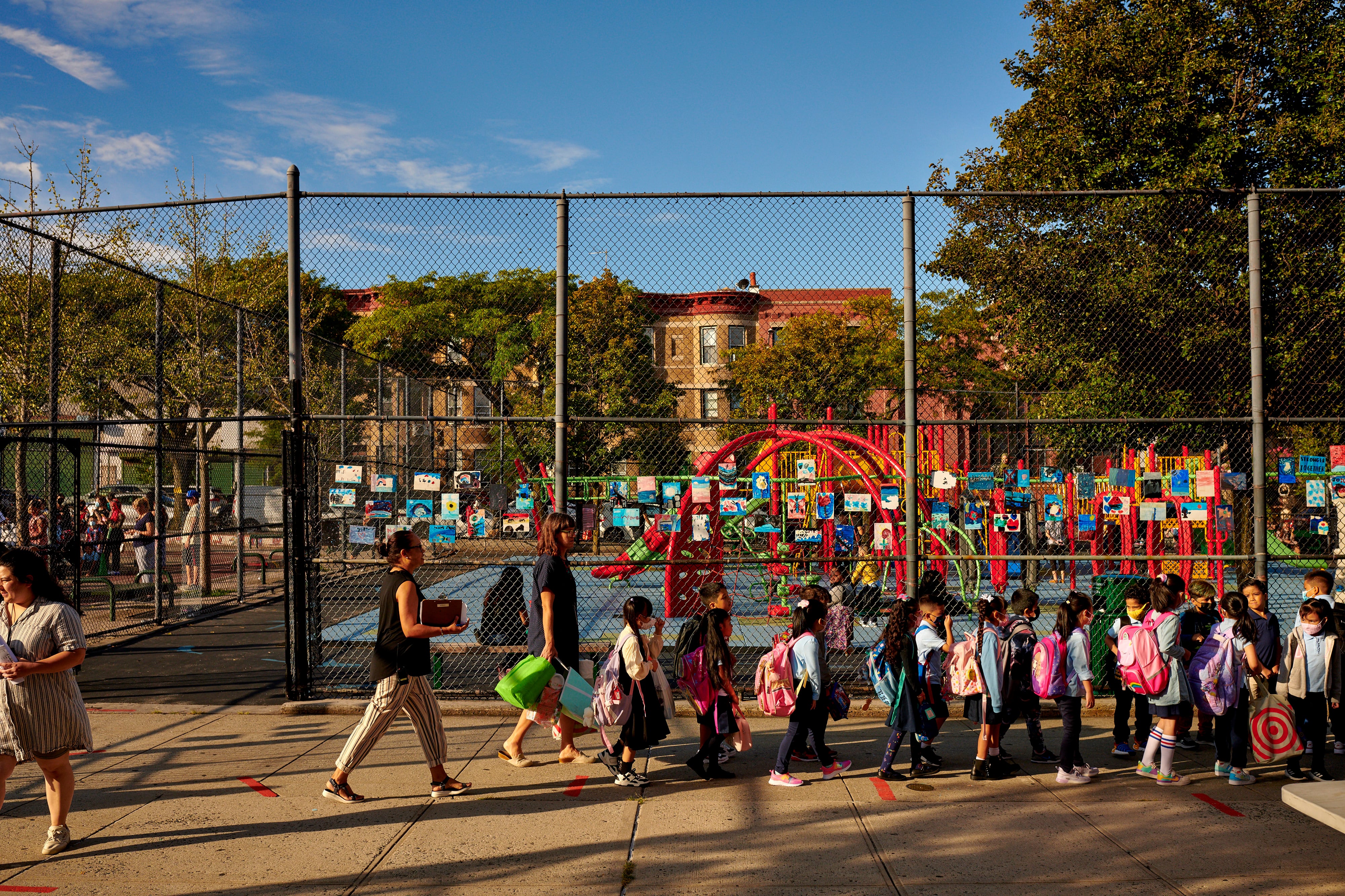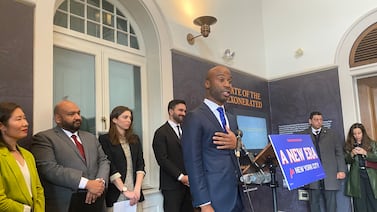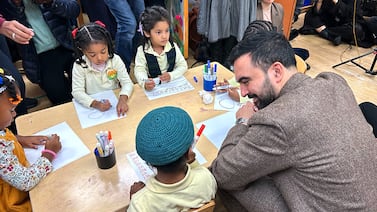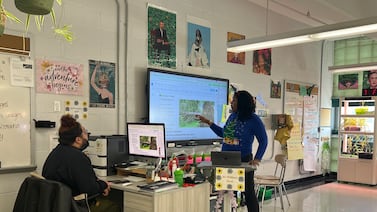Sign up for Chalkbeat New York’s free daily newsletter to keep up with NYC’s public schools.
The number of students attending New York City’s public schools increased for the first time in eight years, a sign that enrollment may be stabilizing in the wake of deep declines during the pandemic.
About 915,000 children from 3-K to 12th grade enrolled this year, up 0.9% from last year, or roughly 8,000 additional students, according to preliminary Education Department data released Wednesday.
Still, city schools enrolled about 92,000 fewer children compared with the year before the pandemic hit, a decline of roughly 9%.
An influx of asylum-seeking families appeared to be a major factor in reversing the yearslong trend of declining enrollment. About 13,000 migrant students have enrolled in the city’s schools since June, city officials said.
Mayor Eric Adams has previously taken a harsh posture on the wave of arriving asylum seekers, saying, “This issue will destroy New York City.” He traveled to the border last month to persuade migrants not to come. Meanwhile, to finance services for migrant families, the mayor has ordered funding reductions elsewhere — including up to $2.1 billion from the Education Department’s budget.
In a joint press release with schools Chancellor David Banks, Adams celebrated the rise in enrollment and some of the city’s efforts to welcome new arrivals in the city’s public schools.
“Chancellor Banks and our administration are focused on delivering the best education possible for our young New Yorkers by cutting through bureaucracy, expanding outreach, and making enrollment easier,” Adams said in a statement. “New Yorkers are voting with their feet, and we are excited to see funding increase for so many of our public schools.”
City officials cautioned that the enrollment figures are preliminary and will likely fluctuate as students continue to enter or leave the system midyear. (The numbers do not include charter schools.)
Enrollment is a key issue because the lion’s share of school budgets are determined based on how many students are on their registers. Over the past few years, the Education Department avoided some enrollment-related cuts to individual schools by using hundreds of millions worth of one-time federal relief funding as campuses recover from the pandemic.
That money is dwindling, though, which means schools face growing budget pressures.
For the first time since the pandemic hit, the Education Department is forcing schools to return money in the middle of the year if they end up enrolling fewer students than the city projected.
Because of higher than expected enrollment, about 57% of schools will see midyear funding bumps, averaging about $209,000 per school, officials said. The remaining 43% of schools will see midyear cuts averaging $167,000.
Declining enrollment can pose other significant problems for schools. As the number of students on a given campus dwindles, it typically becomes increasingly difficult to fund a full range of programs and extracurricular activities. The number of schools with tiny enrollments has grown in recent years, prompting questions about whether city officials may propose a wave of mergers or closures.
In a recent interview with Chalkbeat, Banks said district leaders are planning to have “community conversations” this year about potential mergers.
“Some level of consolidation is something that I think we would be irresponsible if we were not looking at that,” Banks said, “particularly in light of the fiscal challenges that we’re having.”
Alex Zimmerman is a reporter for Chalkbeat New York, covering NYC public schools. Contact Alex at azimmerman@chalkbeat.org.






